A collection of various teaching and training guides, and curriculum based materials. These resources may be useful for professional teachers, interpretive staff, naturalists, docents and volunteers to effectively communicate MPAs and ocean conservation messaging.
Teaching Materials

Marine Protected Area (MPA) Docent Training Handbooks
The Ocean Communicators Alliance developed MPA Docent Training Handbooks for each coastal region of California. These handbooks are geared towards docents, naturalists, and interpretive staff.
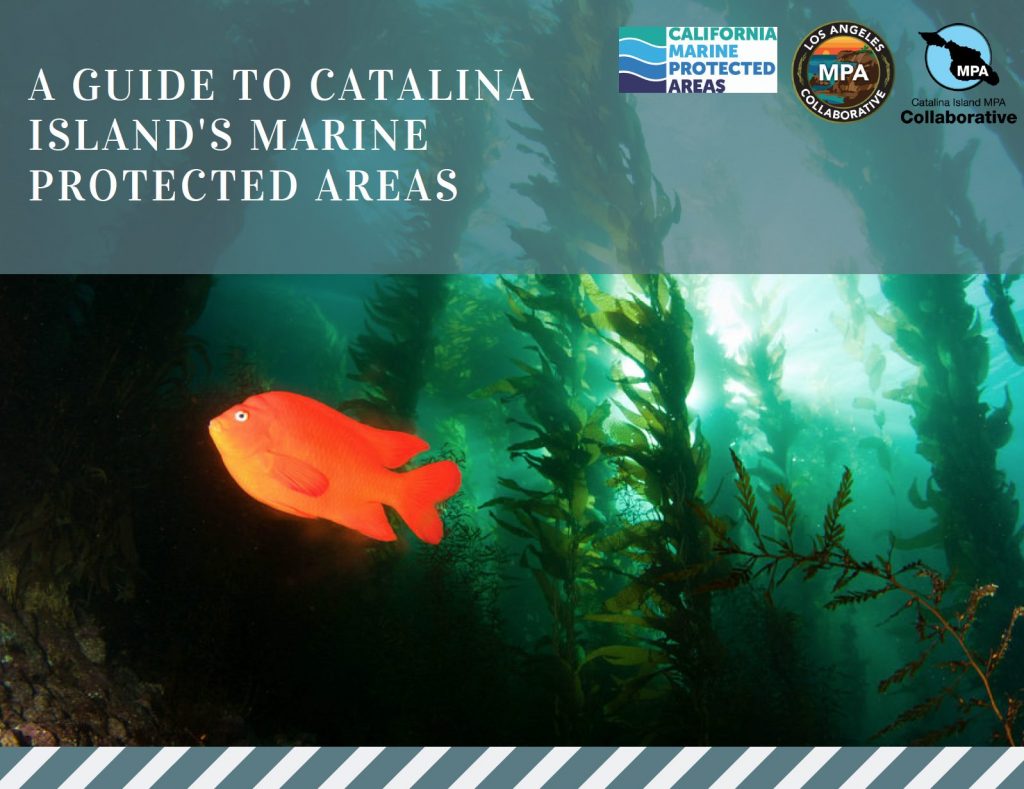
LA & Catalina Island Collaborative Speakers Training Presentation
Presentation from the MPA Speakers Bureau Training Program created by the Los Angeles and Catalina Island MPA Network Collaboratives and piloted at the Catalina Island MPA Symposium. Designed to train speakers as MPA ambassadors to communicate with the public and priority boating, angling and diving communities.

Communicating for Success- A Handbook for MPAs
NOAA’s Office of National Marine Sanctuaries, the IUCN Commission on Education and Communication (CEC) and the IUCN World Commission on Protected Areas-Marine (WCPA) created a guidebook that outlines how to use communication as more than just a tool for outreach, but rather as a mechanism to catalyze change in a community’s attitude and behavior towards MPAs. It outlines different types of media strategies with step-by-step instructions so that you can determine what is the most appropriate strategy for different situations and how to effectively employ it.
Click here to view the IUCN Guidebook for MPAs.

MPA Messaging, What Works
Resource Media—a nonprofit communications firm that works at the intersection of public, economic and environmental health—created a document containing five key messages that can be referenced when communicating about MPAs to various audiences. Each also includes suggested talking points. These can form the foundation of communication about MPAs in multiple settings, from supporting MPAs at a Fish and Game Commission hearing to meetings with local legislators or talking with people you meet at the shore.

Monterey Bay National Marine Sanctuary Volunteer Training Manual
Produced by the MBNMS, this volunteer training manual includes basic information on marine protected areas: what they are, the science that supports them, and the different types, as well as maps of all central coast MPAs. This manual can easily be adapted to other regions of the state and included in existing volunteer handbooks.
View the training manual here: Monterey Bay National Marine Sanctuary Volunteer Training Manual

EBM Toolbox: Teaching Marine protected Area Design and Management
Resources and trainings resources for teaching marine protected area (MPA) design and management. Compiled by EBM Tools Network members, this is a list of resources for teaching about MPAs at all educational levels.
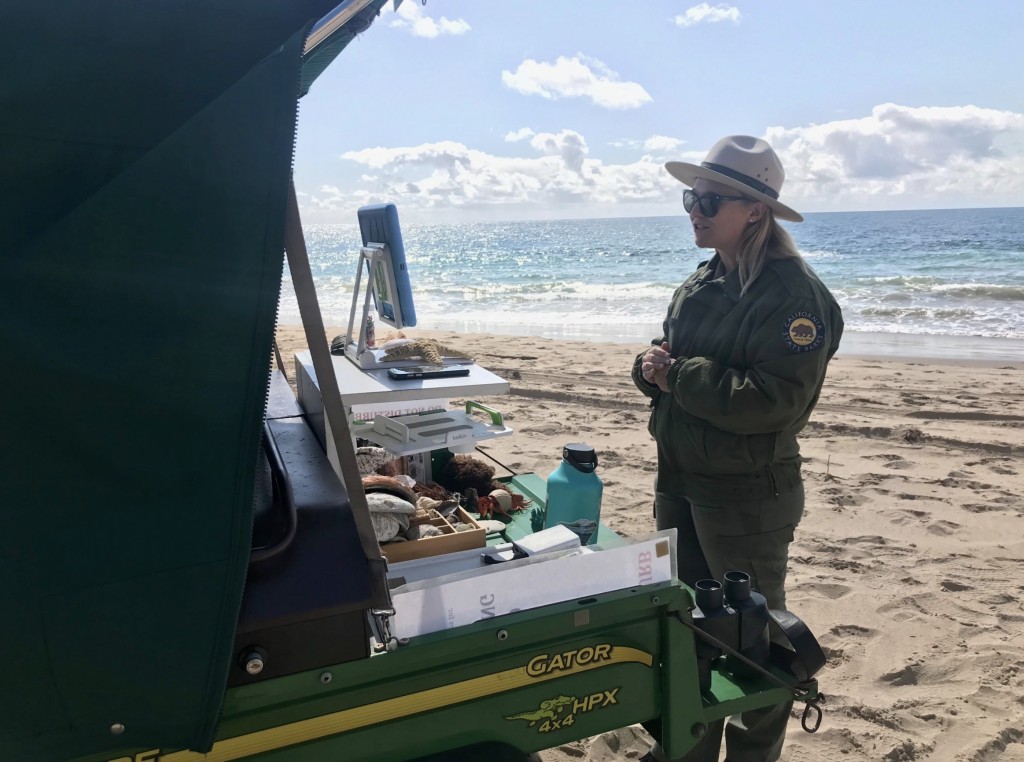
Marine Protected Area PORTS Distance Learning Program and Curriculum
The Parks Online Resources for Teachers & Students program (PORTS), is a FREE distance learning program that uses the power of interactive videoconferencing to assist K-12 educators teach Common Core and Next Generation Science Standards in the context of California State Parks. PORTS has teamed-up with the California Department of Fish and Wildlife to teach students about California’s marine protected areas (MPAs). In addition to live videoconferences, students can also dive into MPAs through this innovative PORTS curriculum: MPA Curriculum
MPA information is included in five units of study:

Living on the Edge- A Students Guide to the Intertidal
A tidepooling guide for students, developed by WILDCOAST . This guide is essentially a lesson on tides, the intertidal zone, tidepool creatures and etiquette. There is also a bioblitz lesson for students to complete.
View the guide here: Living on the Edge- A Students Guide to the Intertidal
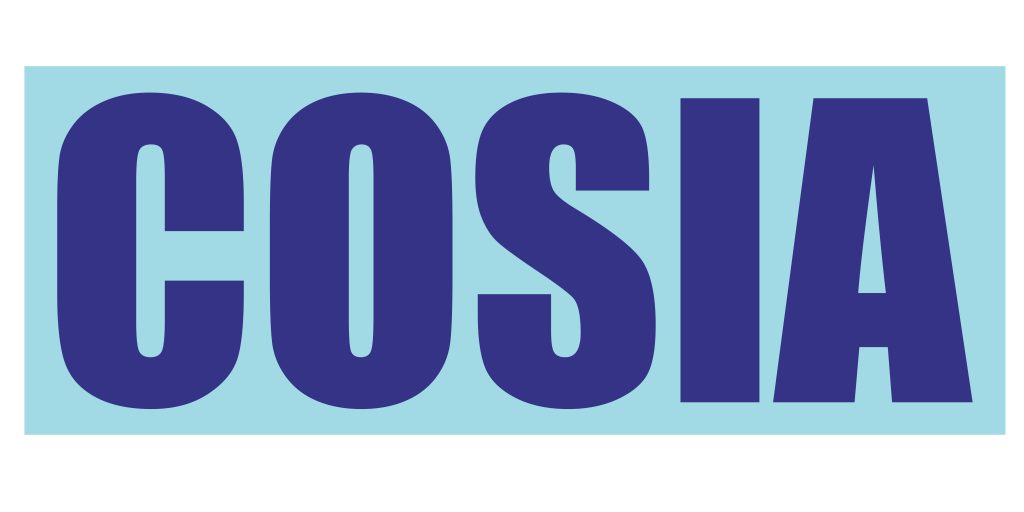
One fish, two fish, red fish… no more fish! Importance of Marine Protected Areas
The COSIA (Communicating Ocean Sciences to Informal Audiences) program at CalPoly San Luis Obispo has created curricula designed to convey ocean science concepts in informal learning settings such as aquariums, interpretive centers, and public outreach events. One of these curricula focuses on California’s network of MPAs and how MPAs can ameliorate problems such as overfishing. This lesson plan guides teachers and facilitators through a series of interactive activities, and includes resources on the science of MPAs.
View it here: Importance of MPAs

Our Undersea Legacy- A Curriculum Resource for Marine Protected Areas in Southern California
The Southern California Aquarium Collaborative, along with California Sea Grant and COSEE West, have generated a series of lesson plans for middle school students. The curriculum includes background information, detailed lesson plans, activities, additional extension resources and addresses many of the California’s state standards.
View the curriculum here: Our Undersea Legacy South Coast MPA Curriculum
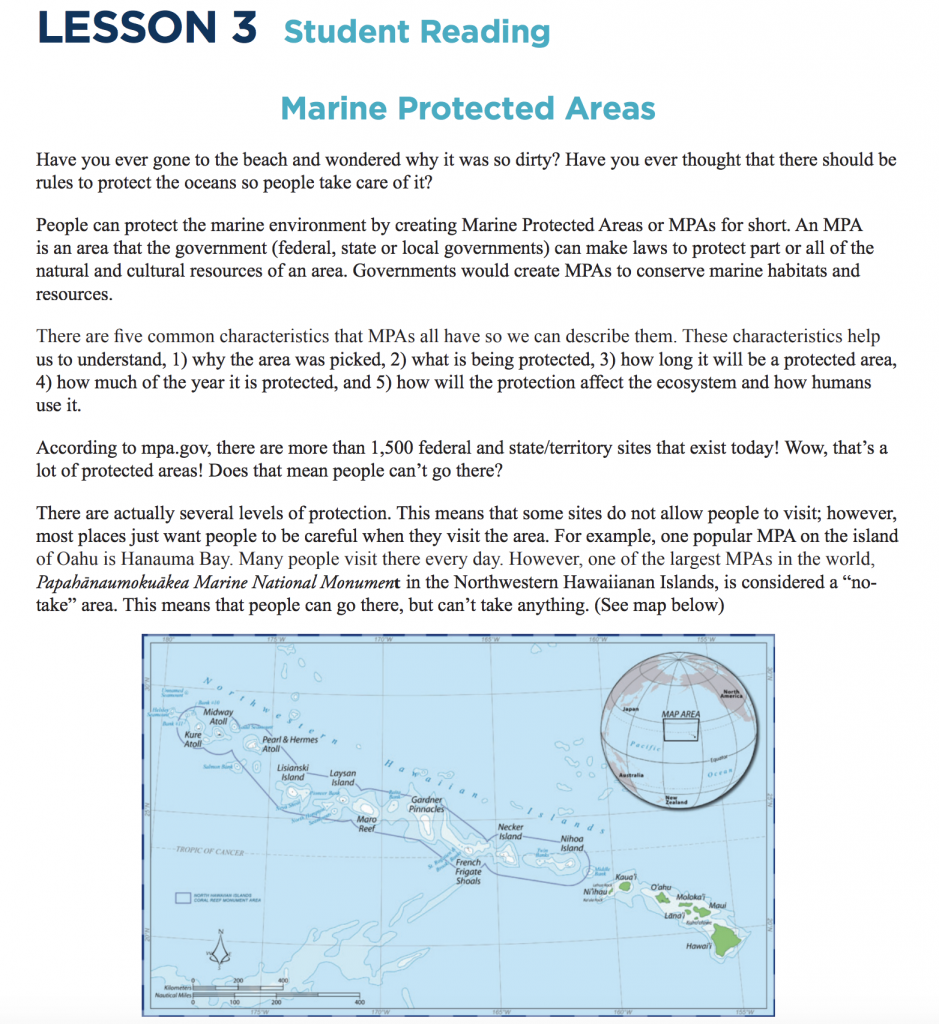
NOAA Marine Protected Areas Lesson
In NOAA’s marine protected area lesson, students are introduced to MPAs and will apply previous knowledge to understand why marine protected areas are necessary. View the curriculum here: What is a Marine Protected Area?
Taken from NOAA’s Sea Earth Atmosphere Educational Resources, this lesson targets elementary level students.
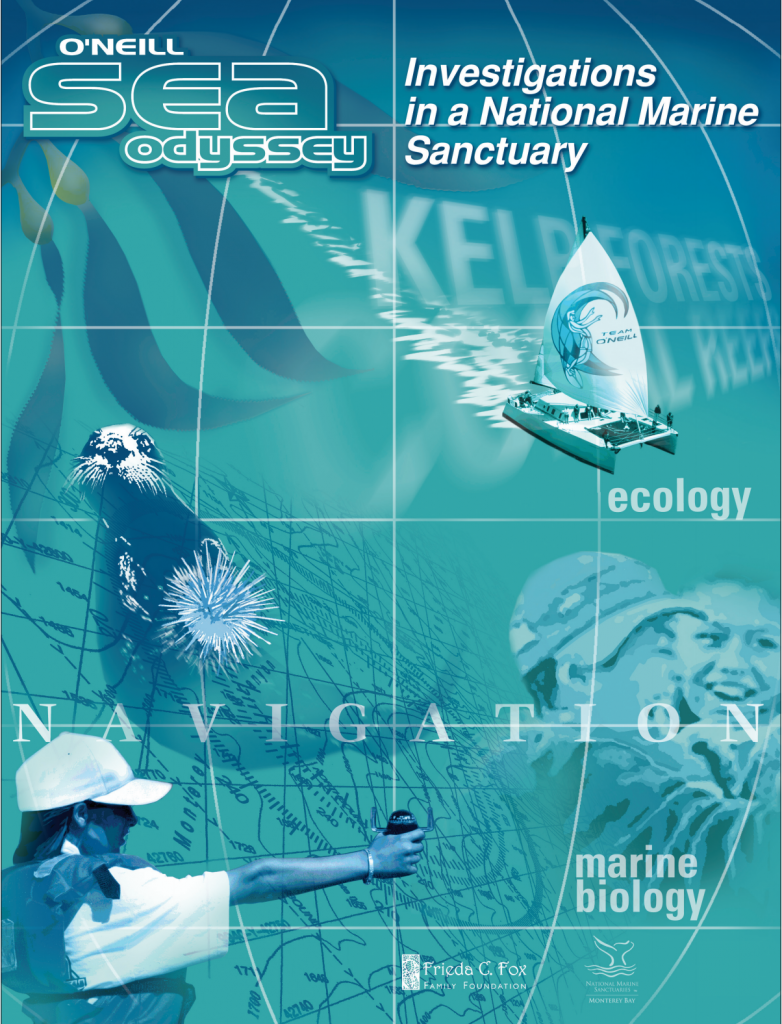
O’Neill Sea Odyssey Curriculum
Hands-on lessons about the marine habitat and the importance of the relationship between the living sea and the environment for 4th-6th grade students. The program is taught on board the 65-foot Team O’Neill catamaran in the Monterey Bay National Marine Sanctuary with follow-up lessons at the shore-side Education Center at the Santa Cruz Harbor. OSO provides online resources for teachers and students that can be used to create a sustained oceanography program with components both inside and outside the classroom. The OSO curriculum includes three learning stations: Marine Biology, Marine Ecology and Navigation. At each station the students record data pertaining to the subject matter of the station.
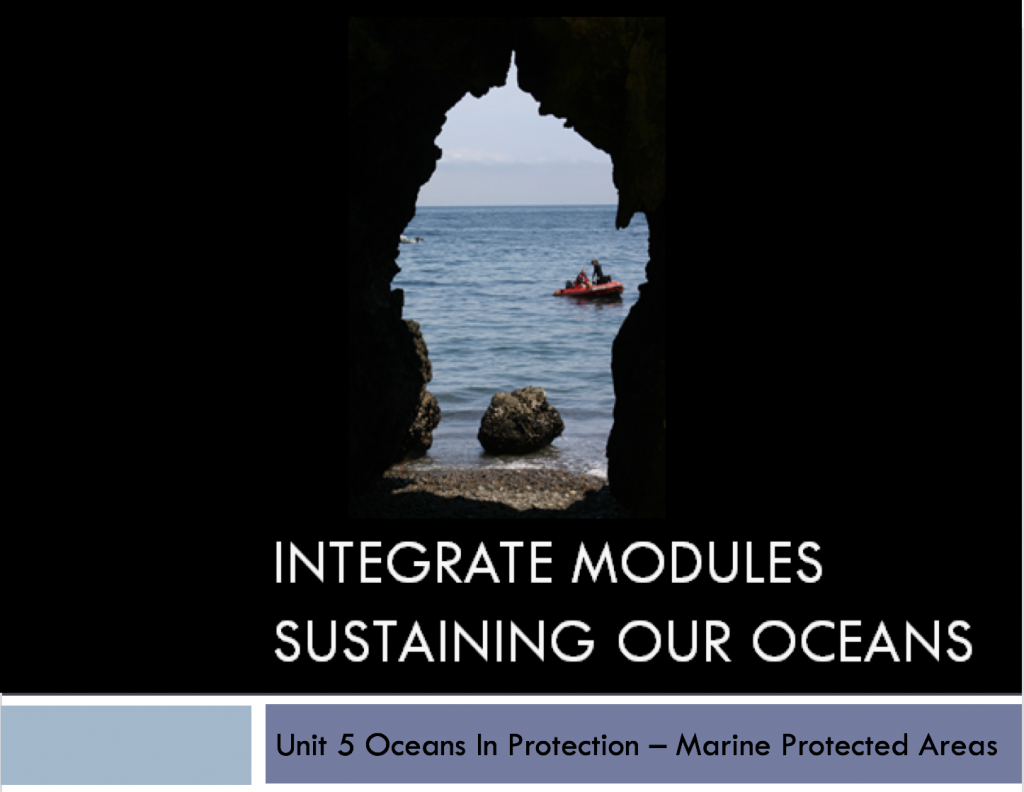
MPA Lesson for Undergraduates- Carlton College Science Education Resource Center
This unit is part of a two- to three-week module on ocean sustainability created for the InTeGrate project. In this unit, students review current pressures on ocean ecosystems, learn to define MPAs and marine reserves, and examine scientific evidence related to the presence of marine reserves. They also conduct a hands-on exercise to map ideal locations for the creation of a marine reserve, considering oceanographic, biological, and sociological factors in their decision-making process.

Marine Protected Areas And MPA Networks Module- American Museum of Natural History, Center for Biodiversity & Conservation, Network of Conservation Educators & Practitioners
This module introduces MPAs including the costs and benefits, relations to biodiversity and fisheries management, design and implementation, with a look towards how MPAs can be more effective in the future. Through role-playing, the accompanying exercise allows students to experience the challenges of developing a plan for an MPA that satisfies different users while meeting common objectives.

MPA Jeopardy
This interactive learning tool was developed by the PORTS program of California State Parks and teaches students about marine protected areas through a Jeopardy style question and answer game.
View it here: MPA Jeopardy

Seafari Educational Tour- Santa Barbara Channel Keeper
A citizen science monitoring program that trains volunteers to observe and collect data on human uses inside and outside MPAs. Volunteers use standardized protocols to collect data to inform management and track how the public uses coastal areas.
Learn more about the Seafari Educational Tour.

Kids Activities
A suite of fun and engaging activities for kids created by partners from across the state can be found by following the link below.


